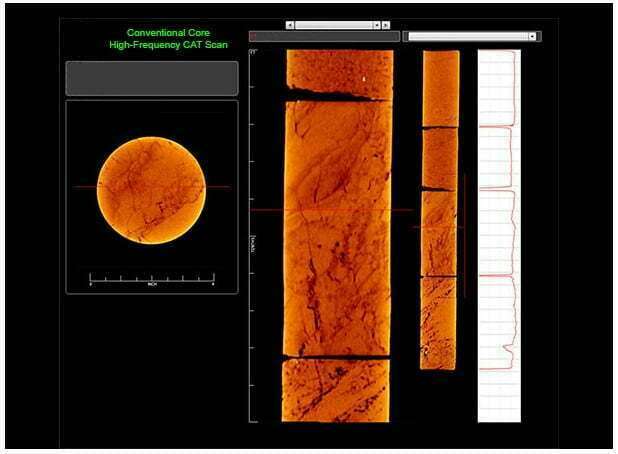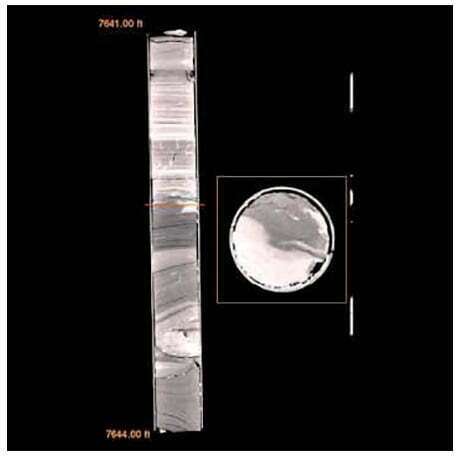Computer-Assisted Tomography (CAT) Scanning
A computer-assisted tomography, or CAT scan, produces an image of the internal structure of a cross-sectional slice through an object by reconstructing a matrix of x-ray attenuation coefficients (Figure 1). CAT scanning is a non-destructive x-ray technology that is most familiar through its use in medicine, but which has been found to have oil industry applications as well.
Applications relating to core analysis include:
- Visualizing the extent of mud filtrate invasion
- Detecting fractures (Figure 2)
- Characterizing the lithology of cores contained in opaque preservation material and stainless steel pressure vessels
- Screening cores prior to flow tests
- Correlating scan data to porosity, permeability and lithology
- Waterflooding studies
A good technique for observing the actual progressive movement of fluids inside rocks is to use computer tomography (CT) scanning at successive time intervals to record the displacement or flooding process.


Lopez et al. (2012) documented an integrated multiscale imaging and modeling method for determining petrophysical and multiphase flow properties of reservoir rocks at the core pore, sub-plug, plug and whole core scale. The method is based on the integration of multi-scale X-ray computed micro-tomography (MCT) imaging and numerical 3D rock modeling to characterize heterogeneity, pore classes and porosity types at different scales.
 Petro Shine The Place for Oil and Gas Professionals.
Petro Shine The Place for Oil and Gas Professionals.



